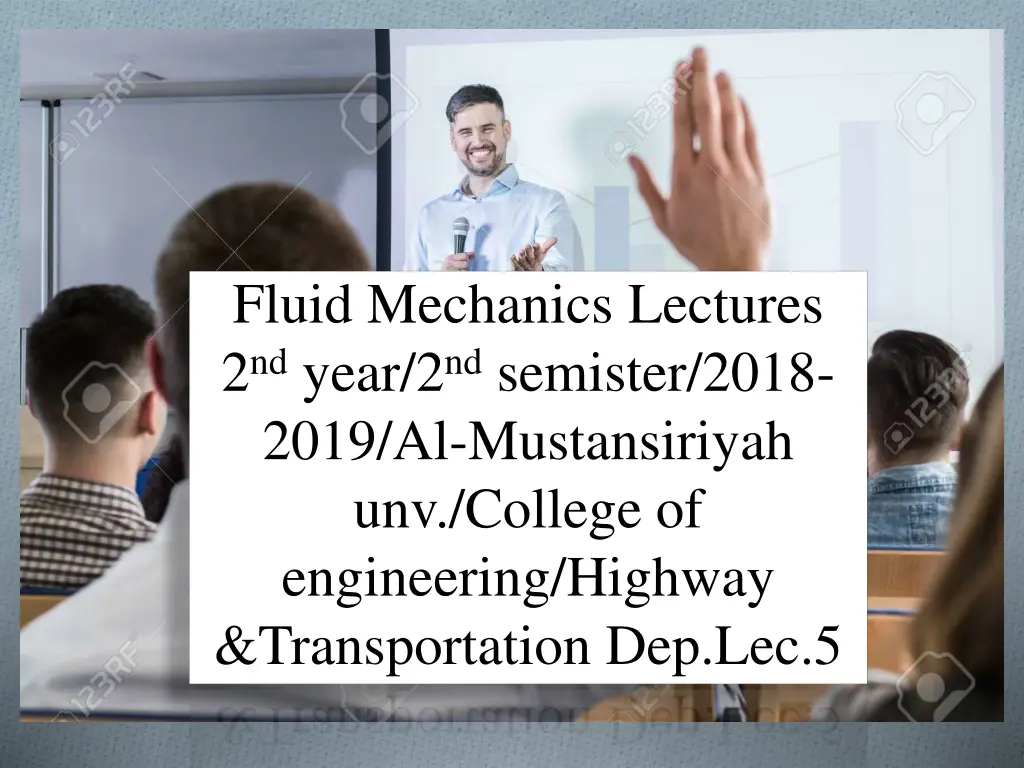
Understanding Fluid Mechanics: Momentum Equations and Applications
Dive into an exploration of momentum equations in fluid mechanics, discovering how mass and velocity contribute to the forces experienced by moving bodies. Learn how these principles apply to fluid dynamics in various scenarios and analyze force calculations in practical examples.
Download Presentation

Please find below an Image/Link to download the presentation.
The content on the website is provided AS IS for your information and personal use only. It may not be sold, licensed, or shared on other websites without obtaining consent from the author. If you encounter any issues during the download, it is possible that the publisher has removed the file from their server.
You are allowed to download the files provided on this website for personal or commercial use, subject to the condition that they are used lawfully. All files are the property of their respective owners.
The content on the website is provided AS IS for your information and personal use only. It may not be sold, licensed, or shared on other websites without obtaining consent from the author.
E N D
Presentation Transcript
Fluid Mechanics Lectures 2ndyear/2ndsemister/2018- 2019/Al-Mustansiriyah unv./College of engineering/Highway &Transportation Dep.Lec.5
O OThe momentum equation The momentum equation OIt is defined as the product of the mass and the velocity of a moving body. Thus since velocity is vector quantity , the momentum of a body changes if either the magnitude or direction of its velocity changes. A net force must be applied to a body to change its momentum. This momentum principle can also be applied to a fluid moving through an arbitrary passageway, as shown in fig.1
. The mass m of fluid within the passageway is equal to the product of the mass flow rate Q and the time interval t: m= ( Q) t F=m*a=( Q) t*a F=( Q) t* ? ? F= Q(v2-v1) Fx= Q(v2x-v1x) Fy= Q(v2y-v1y) Fz= Q(v2z-v1z)
. In fig., a free jet of fluid of cross section area A enters a fixed turning vane, since the direction of the jet velocity is changed, the jet exerts a force F on the van and the van is held in place via a support mechanism that allows the van to exert an equal force but opposite on the jet.
O To obtain x and y components of force F : O Fx= Q(v2x-v1x)= Q(v cos -v) O Fx= - Qv (1-cos ) O Fy= Q(v2y-v1y)= Q(v sin -0) O F= ??2+ ??2
- )Ex1: for the turning vane of fig.2, the following data are given: Jet velocity=10m/s, volume of flow=0.05m3/s, =45 . Find the total force acting on the vane? Fx= - Qv (1-cos ) =-1000*0.05*10(1-cos 45)= -147 N Fy= Q(v sin ) 1000*0.05*10 sin 45=354 N F= ??2+ ??2= 383 N.
. O Ex2: O For the system in fig.3, a jet of oil Sg=0.9, flows at a rate of 100 gpm from a horizontal nozzle having a 1 in dia., if the plate is inclined from the horizontal by an angle 45, fine the total force acting on the plate and floe rate up and down the surface of the plate?
F= Q(v sin ) = water* Sg oil=1.49 slugs/ft3*0.9=1.75 slugs/ft3 V=Q1/A1=100 231 1 1 ? 4 1 1728 60 V= F=1.75*0.223*40.9*sin 45=11.3lb B: Q2=1+cos 45 2 Q3=1 cos 45 2 0.223 0.00545= 40.9 ft/s ?1=85.4 gpm ?1=14.6 gpm
O Flows through bends and nozzles in Flows through bends and nozzles in pipeline: pipeline: O Fig., shows a pipeline containing a reducer type bend , here there is a change in velocity direction and magnitude due to reduction in pipe diameter, and tere is a change in pressure, from fig,: P1A1- P2A2 cos -Fx = Q(v2cos - v1) P1A1 sin - W Fy= Q(-v2sin )






















